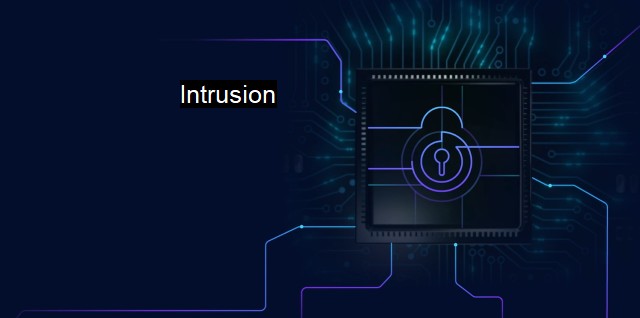What is Intrusion?
Importance of Antivirus Programs in Preventing Intrusion and Ensuring Cyber Security
Intrusion in the context of cybersecurity refers to unauthorized accesses or breaches into computer systems or networks that compromise data privacy and quality. This often illicit activity is typically done with the intent to cause harm, acquire sensitive data, alter system functionality, or perform criminal activities. Advanced technological devices have markedly escalated the ubiquity and severity of cyber threats such as intrusions, requiring the implementation of comprehensive security measures to counter this dire pervasion.An intrusion into a system often points to a security flaw that has been exploited by a hacker. The hacker might exploit weak system vulnerabilities such as insecure system configurations, unpatched software, weak passwords, or a lack of cybersecurity awareness amongst the system’s users. The intruder, usually being a cyber-criminal, can be from outside the hacker's system—abroad malicious attacker; or from within— a disgruntled employee, for example.
There are various types of intrusions, ranging from malware and virus attacks, to more advanced persistent attacks that are designed to slowly gain control over a system. One common type of intrusion is a DoS (Denial-of-Service) attack, where the attacker overwhelms a system's resources, making it inoperable to its legitimate users. Another type is phishing attacks, where attackers seek to trick users into revealing sensitive information like usernames, passwords, and credit card details under the pretense of legitimate actors.
Now, the significance of intrusions cannot be overemphasized—data loss, financial crises, and reputational harm are key potential consequences faced by victims. An intrusion, if undetected, can trigger system failure and corruption of integral data in a company’s database. Intruders could steal sensitive data, such as a company’s financial or customer details or an individual’s vital information leading to financial fraud, identity theft, or defamation.
Fortunately, there are numerous sophisticated cybersecurity technologies designed to thwart these intrusions, such as intrusion detection systems (IDS) and antivirus software. An IDS is a device or software application that monitors network traffic for suspicious activities to identify possible intrusions. IDS can be categorized into two main types: Network Intrusion Detection Systems (NIDS) and Host-based Intrusion Detection Systems (HIDS), both designed to identify any malicious attempt to breach a system's defenses.
On the other hand, antivirus software is a program that prevents, detects, and administers virus or malware from manifesting in your device. Antivirus software operates mainly on signatures to deter against known malware. It uses a detailed, ever-growing library of data, that signals identifiable patterns of data that may become forces of intrusion or impose systems in other harmful ways.
Nothing is foolproof, and while antivirus software and IDS are imperatively vital in guarding systems, some sophisticated malware or intrusion cycles may slide past the initial gates of the machine. That’s where intrusion prevention systems kick in. Intrusion Prevention Systems (IPS), a progression of IDS, not only detect potential intrusions, but also respond to the malicious activities, preventing the interaction with system assets.
Intrusions highlight the critical need for cybersecurity measures. They underscore the essentiality of advance precaution such as proper software patch management, stringent access paths control, detailed employee cybersecurity training, and steady cybersecurity awareness across a system. As technology continues to advance, organizations and individuals face an essential responsibility to not only protect their data but also understand the potentially disastrous implications of successful intrusions. A proactive approach can mitigate these risks and help maintain safe and secure cyberspace. Cybersecurity isn’t just a concept; it is a necessity in today's digital era of expanding intrusion tactics and techniques.

Intrusion FAQs
What is an intrusion?
An intrusion, in the context of cybersecurity, refers to the unauthorized access or attempt to access a computer network, system or data by an attacker.What are the common types of intrusion?
The common types of intrusion include network intrusions, application-level intrusions, and insider intrusions. Network intrusions involve attackers accessing networks or devices without authorization, while application-level intrusions involve attackers exploiting vulnerabilities in software applications to gain access to a system. Insider intrusions happen when authorized users misuse their access to a system for personal gain or to cause harm.How can an antivirus help prevent intrusions?
Antivirus software can help prevent intrusions by detecting and preventing the execution of malicious software. This software uses various techniques such as signature-based detection, behavioral analysis, and machine learning algorithms to detect and block potential threats. It can also monitor network traffic, scan email attachments, and remove known malware from infected systems.What are the consequences of a successful intrusion?
The consequences of a successful intrusion can be severe, including loss of data, theft of sensitive information, financial losses, reputational damage, and legal liabilities. Intrusions can also result in system downtime and disruption of business operations. Additionally, a successful intrusion can lead to further attacks, as attackers can use compromised systems to launch new attacks on other networks or systems.Related Topics
Intrusion detection systems (IDS) Malware detection and removal Vulnerability scanning Penetration testing Firewalls
| | A | | | B | | | C | | | D | | | E | | | F | | | G | | | H | | | I | | | J | | | K | | | L | | | M | |
| | N | | | O | | | P | | | Q | | | R | | | S | | | T | | | U | | | V | | | W | | | X | | | Y | | | Z | |
| | 1 | | | 2 | | | 3 | | | 4 | | | 7 | | | 8 | | |||||||